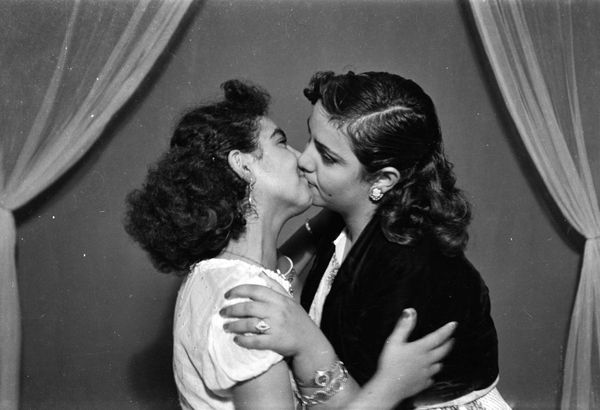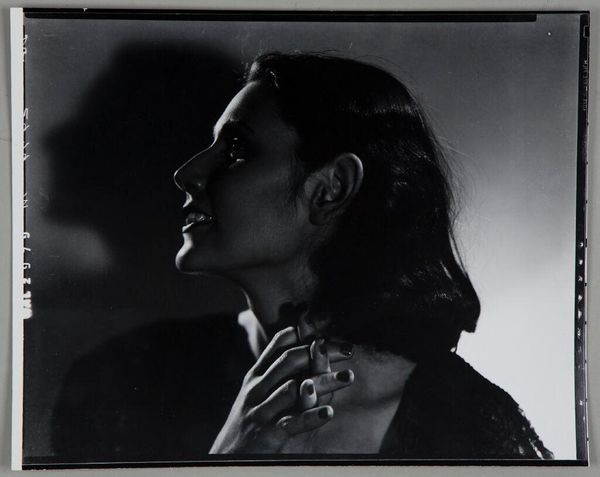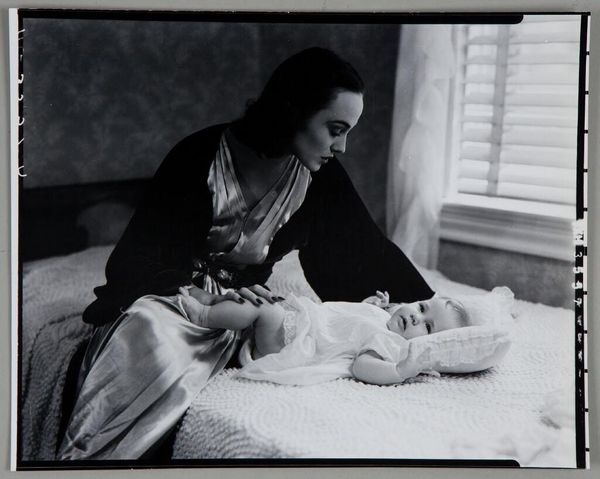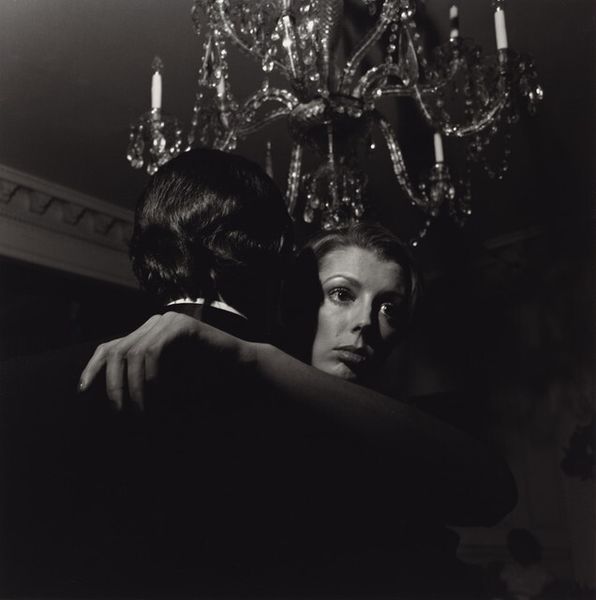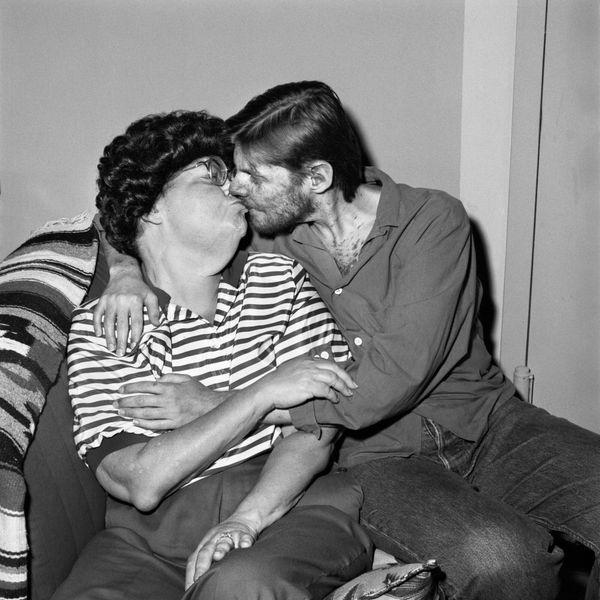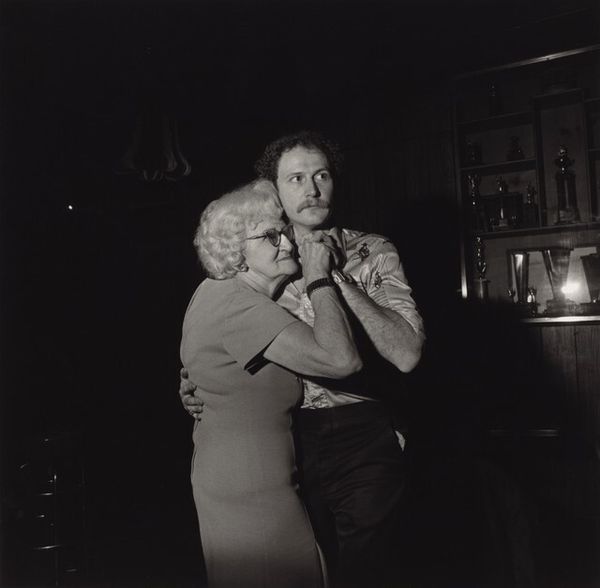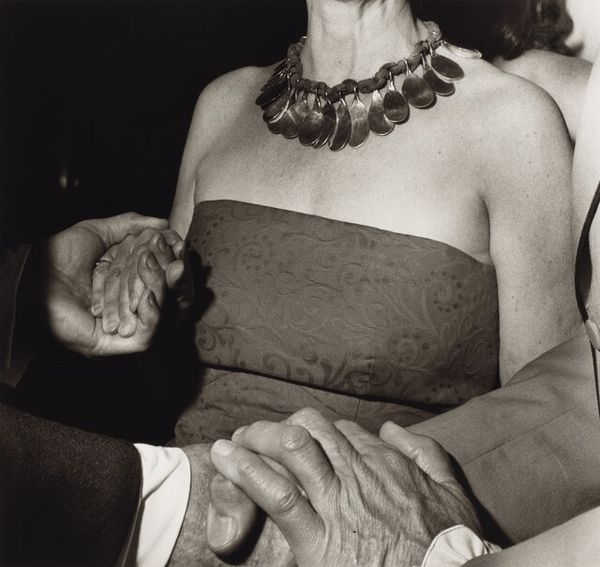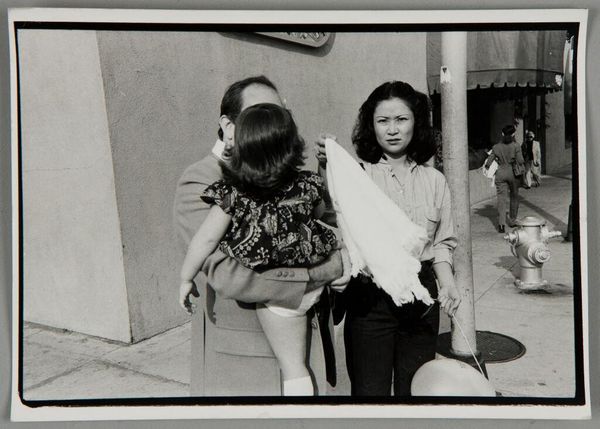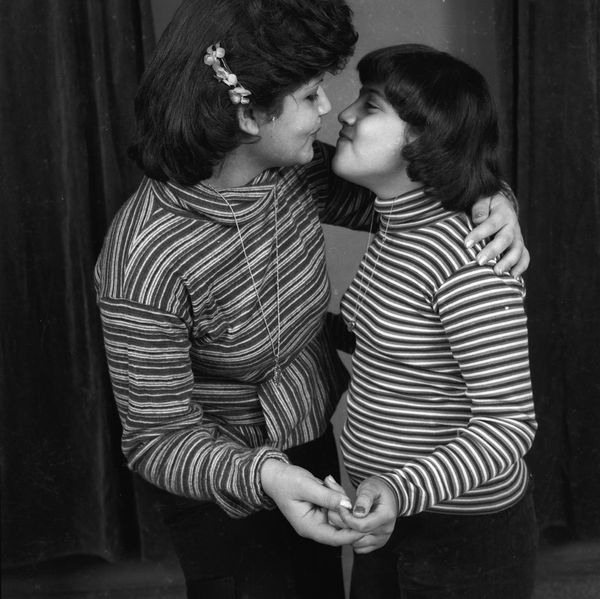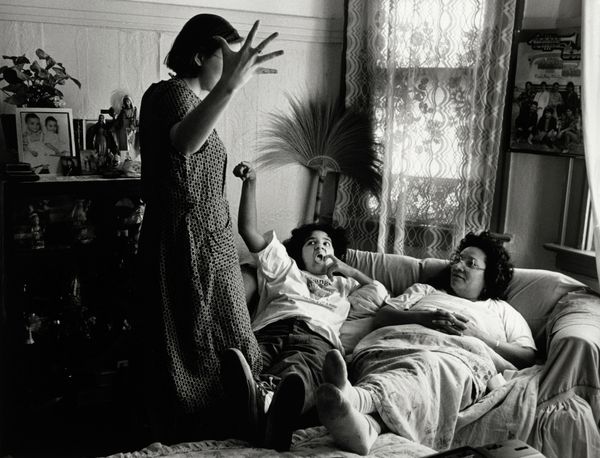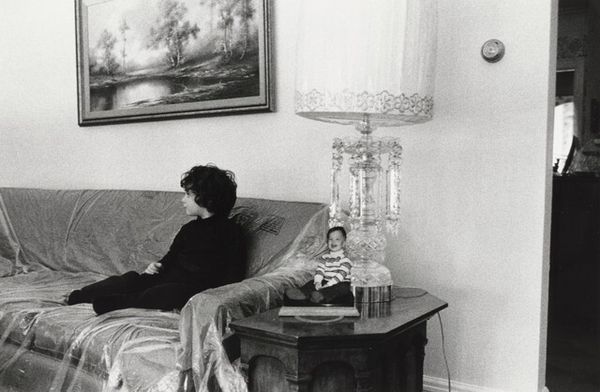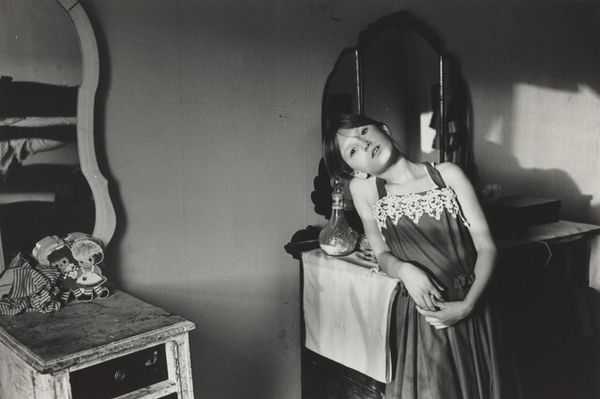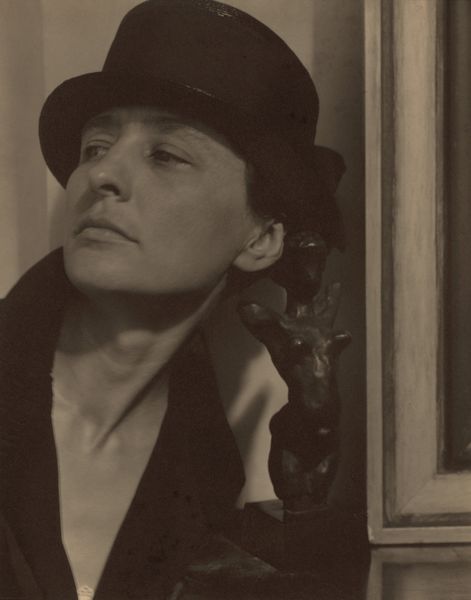
photography, gelatin-silver-print
#
portrait
#
still-life-photography
#
photography
#
gelatin-silver-print
#
modernism
Dimensions: image: 34.1 × 45.3 cm (13 7/16 × 17 13/16 in.) sheet: 40.7 × 50.5 cm (16 × 19 7/8 in.)
Copyright: National Gallery of Art: CC0 1.0
Curator: This is Nancy Andrews' photographic portrait, "Phyllis Hunt and Terrie Harner," from 1992, printed as a gelatin-silver print. It's quite striking. Editor: The first thing that hits me is the intimacy captured in black and white; there's a closeness, almost conspiratorial, vibe. Is this staged or spontaneous? Curator: Andrews was very intentional about revealing her process. The gelatin silver print, a darkroom process dating back to the 1870s, gives it this wonderful tonal range. Considering it was shot in 1992, she deliberately employs a fairly archaic, handcrafted mode of production here. It invites considerations of the artistic labor involved in portraiture itself. Editor: I immediately want to know more about these two women. Their intertwined pose—the touch, the gaze—subverts conventional portrayals of women. The adornments like jewelry or the bow act as signifiers within a broader lesbian subculture. It feels charged, as though Andrews aims to reveal their stories and identities. Curator: And it's interesting how those markers are constructed—note the jewelry and fingernail polish. This brings me to consider what is made, purchased, used—or ultimately, what gets displayed in such intimate portraits of affection? The setting is familiar but the individuals being affectionate towards each other disrupt any notion of tradition. Editor: Absolutely, it's about making visible, and maybe even a celebration of the subjects on their own terms. It challenges us to question normative narratives around queer identity in photography, at a time when LGBTQ+ rights were intensely debated. Curator: The photograph also emphasizes the tangible labor and careful control of the image's construction, connecting process and product within a modernist context. It serves not just as a visual representation but also as a record of the photographic method. Editor: This makes you really think about portraiture's ability to facilitate visibility. It's like Andrews opens up a space, making queer experiences and queer joy visible. Curator: This exploration underscores the deliberate blending of artistic intent, photographic materials, and a keen attention to craft. Editor: And that, precisely, is what makes it linger in our minds, decades later, inviting ongoing dialogues around visibility, representation, and agency.
Comments
No comments
Be the first to comment and join the conversation on the ultimate creative platform.
